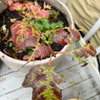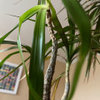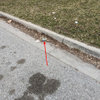'Fungal' blight on Aristocrat ornamental pear.
yiorges-z5il
11 years ago
Related Stories

EDIBLE GARDENSHow to Add an Apple Tree to Your Edible Garden
Readily available, beautiful and fragrant, apple trees offer four-season interest along with crisp, juicy fruit
Full StoryMore Discussions










ken_adrian Adrian MI cold Z5
calliope
Related Professionals
Salem Landscape Architects & Landscape Designers · Sahuarita Landscape Architects & Landscape Designers · Anderson Landscape Contractors · Williamsburg Landscape Contractors · El Mirage Landscape Contractors · Euclid Landscape Contractors · Galveston Landscape Contractors · Hoffman Estates Landscape Contractors · Little Ferry Landscape Contractors · Live Oak Landscape Contractors · Lynwood Landscape Contractors · Royal Oak Landscape Contractors · Santa Ana Landscape Contractors · Spring Landscape Contractors · York Landscape Contractorsyiorges-z5ilOriginal Author
calliope